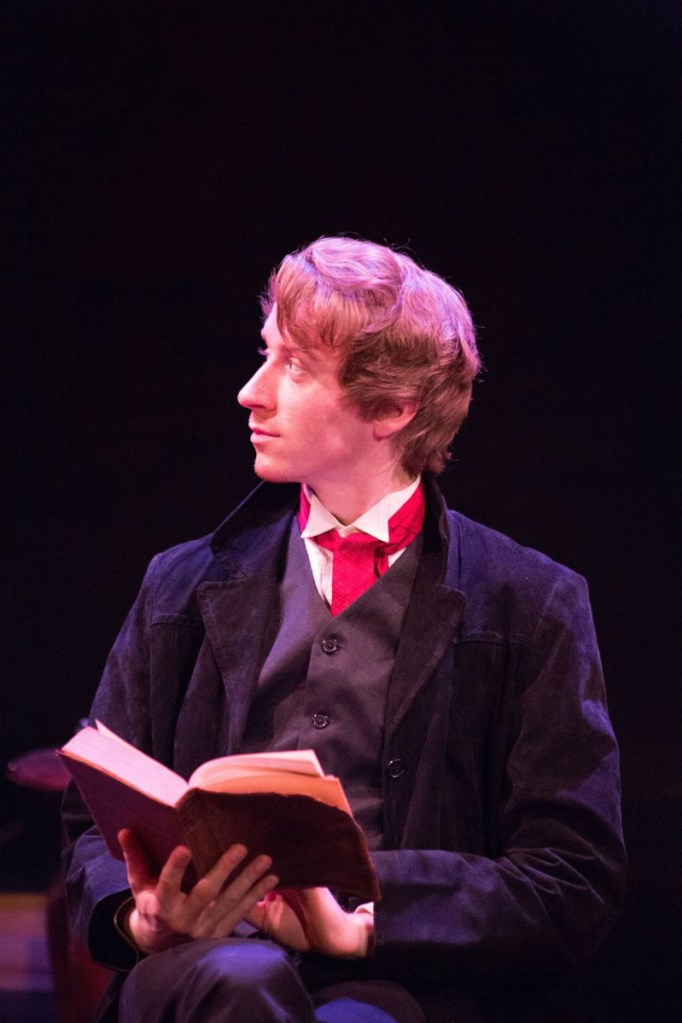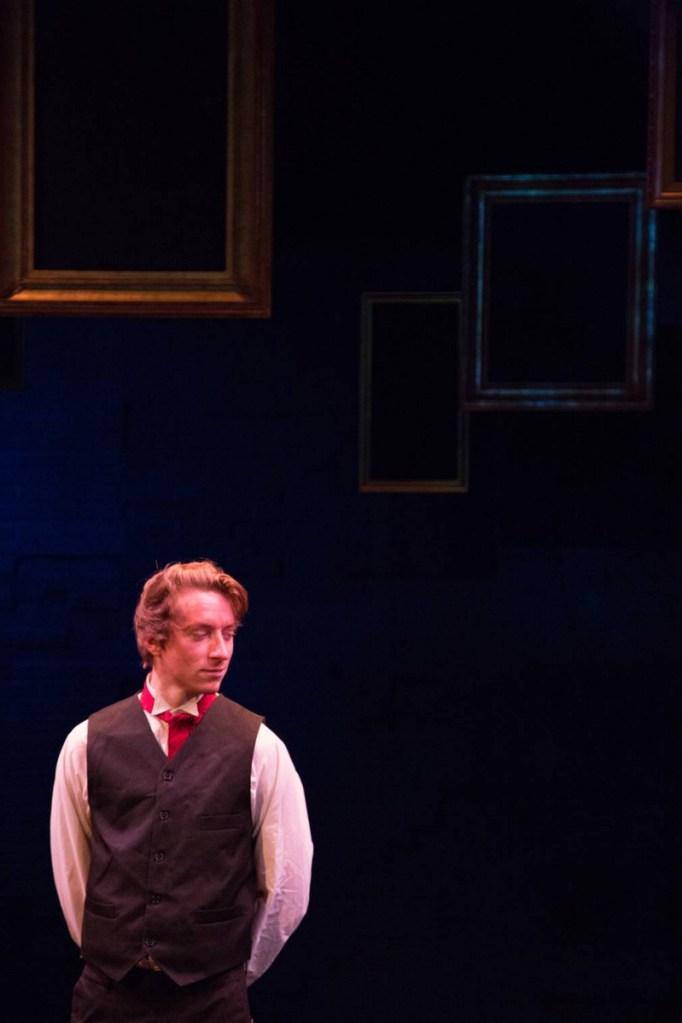In this era of endless selfies, the appreciation of carefully crafted and deeply felt artistic portraits may be rare. Oscar Wilde’s classic tale of a painting with a life of its own, though, suggests beauty has always been elusive.
A new production of “The Picture of Dorian Gray,” as adapted for the theater by Merlin Holland (Wilde’s grandson) and John O’Connor, is now filling the stage at the Theater Project in Brunswick with Wildean chills and chuckles.
Director Al Miller has assembled an able cast of local actors who, despite some stumbles on opening night, boldly took on the abundance of witty and wily dialogue spread over nearly two dozen scenes. With its source material so rich, there’s plenty to like about the spirit of this production.
The famous story about the Victorian-era man who sells his soul to stay young and then spirals out of control as his portrait grows hideous before his eyes contains a heady mix of melodrama and social satire.
Thomas Ian Campbell plays Dorian, the young dandy who is perhaps too accepting of the wrong sorts of suggestions. Credible as the type of pretty boy who gets just about everyone thinking romance, Campbell most embodies Wilde’s literary investigation of narcissism and self-indulgence in his relationship to a young actress. Here we see his dark side at work as opposed to being told about it elsewhere in the play, though his general superficiality also intrigues.
Tom Handel takes on the plum role of Lord Henry Wotton, a devilishly charming gentleman whose witty and wicked aphorisms about life find a welcome home in the mind of Dorian. Handel struggled a bit in his delivery early on but did ultimately succeed in establishing the period affectations and dangerous allure of this aristocratic wag.
Andrew Elijah Edwards, as the portrait painter with a crush on his subject, established the undercurrent of unease that his character Basil felt. Foolishly forlorn over the impetuous Dorian, Edwards’ Basil sympathetically reflects his unrequited desire. The actor later livened things up considerably, doubling in several minor comic roles.
Catherine Buxton showed versatility and a way of grabbing onto a scene in female and male roles that spanned the social classes of the period. And Anna Mikuskova drew sympathy and laughs as the smitten Shakespearean actress victimized by Dorian.
Technical staff led by JP Gagnon, Nina Roth-Wells, Jessie Eastman Perry and Jennifer Roe have combined efforts to create a minimal aesthetic (with a few surprises) in this three-quarters-in-the-round production.
Along with much wit and a few spooky moments, the general feeling in this play of an era unraveling lends credence to the thought that this is a good time to take another look at Dorian Gray.
Steve Feeney is a freelance writer who lives in Portland.
Send questions/comments to the editors.




Success. Please wait for the page to reload. If the page does not reload within 5 seconds, please refresh the page.
Enter your email and password to access comments.
Hi, to comment on stories you must . This profile is in addition to your subscription and website login.
Already have a commenting profile? .
Invalid username/password.
Please check your email to confirm and complete your registration.
Only subscribers are eligible to post comments. Please subscribe or login first for digital access. Here’s why.
Use the form below to reset your password. When you've submitted your account email, we will send an email with a reset code.